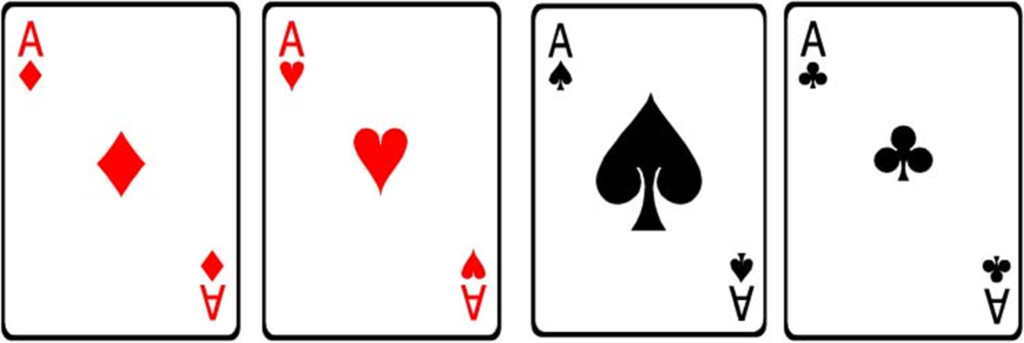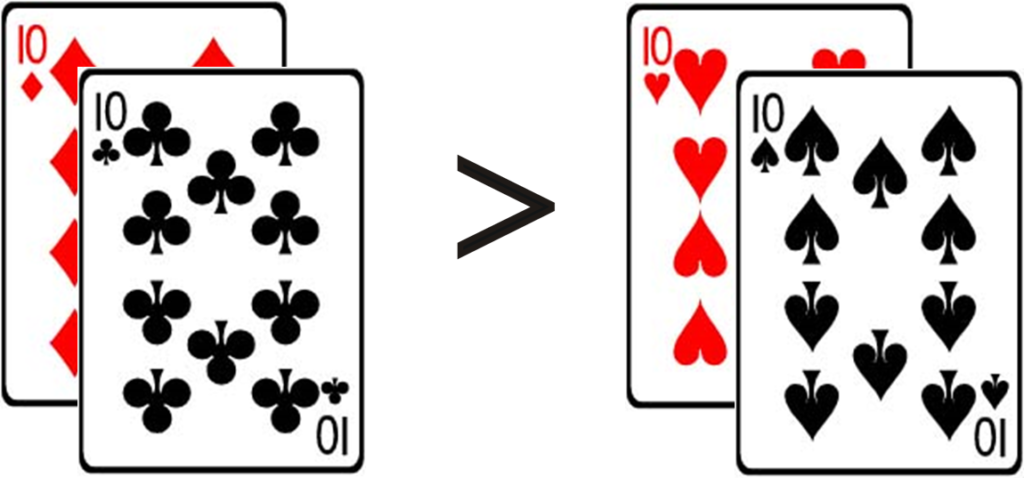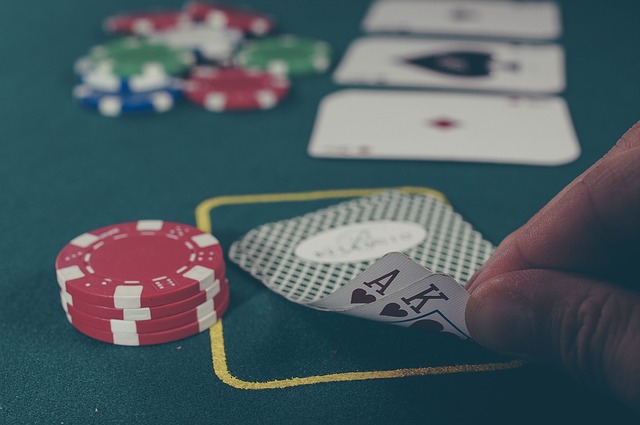Poker Rules and Hands
Poker Rules and Hands
I’m still surprised that a good number of people don’t know how to play Poker or at least play it correctly. Hopefully this quick guide will help anyone in understanding the rules and forming their own strategy for Poker games.
Objective of Poker
First thing you have to know, what is the goal of Poker?
Primarily, the goal is to get the combination of cards with the highest value as compared to the combination of cards of your opponents during a specific round of play. This is true for most kinds of Poker such as 5-card draw, Texas Hold ‘Em, Omaha High, Seven Card Stud, etc. However some variations of Poker will have you compete in other ways like for example in Omaha Hi/Lo where you compete not only to get the highest possible hand you also vie to get the lowest possible hand.
Poker Card Values
Easy enough to remember are the values of the playing cards used to play the game. You will notice that each card will have either a number or a letter printed on it – this is the “value”. Numerically, it starts from one (1) or as it is more commonly referred to, the “Ace” and climbs up to number ten (10). This is then followed by the values Jack (J), Queen (Q), and King (K) which are cards referred to as “Face Cards”. Note that this order is numerical, for the actual ascending value begins with (2) and ends with (A) as the highest.
Two important things to remember are:
- Ace (A) is the highest value card and only acts as one (1) for numerical counting purposes
- Two (2) is the lowest value card
Below is an image which shows the ascending numerical order of the cards.

What are suits?
Aside from having a value, each card also has a “suit”. What are the different suits and what do they do? There are four suits in a regular deck of cards. These are diamonds, hearts, spades and clovers. The different suits determine the higher value between two cards that have identical numerical value. This means a seven (7) of diamonds is higher than a seven (7) of clubs.
Keep in mind that the suits are from highest to lowest:

Types of Poker Hands
Now that you know how to look at a card and its value it’s time to see what kinds of hands there are in Poker. (A hand is what you call the cards that have for a round of play.) As mentioned earlier it’s all about looking at the combined value of your cards. This means we look at the individual value and then the value of each card that can be grouped together to form a combination. Try to follow me here:
Singles
One card is called a “Single” and is counted on it’s individual value. In cases where no combinations can be made the game defers to the “single” card with the highest value. (Again the highest card would be Ace – of diamonds in case there is more than one Ace in play.) In such situations you can be said to have nothing but “singles” or a collection of cards that do not combine.
Pair or Duo
Two cards that combine together is called a “Pair”. A pair is when you have two cards of the same numerical value regardless of suit. For example you have a ten (10) of diamonds and a ten (10) of spades, this means you have a pair of tens (10). In a game the pair with the higher value wins so in this case, any pair of 9, 8, 7, 6, 5, 4, 3, and 2 would be lower. Meanwhile any pair of J, Q, K, or A would be higher. In cases where there is another pair of tens (10) the pair that posses the highest suit (diamonds) would be the winner.

Trio or Three of a Kind

Three cards combined together forms a “trio” or “three of a kind”. Similar to the pair, a trio does not factor the suit of the card and only requires that you have three of the same numerical value card. For example you have a ten (10) of diamonds, a ten (10) of spades, and a ten (10) of clovers, this means you have a trio. Should there be another trio in play, the group with the higher numerical value wins.
Quad or Four of a Kind

Four cards combined together forms a “quad”. Like the Pair and the Trio, a Quad is valued for its numerical value over any other Quad. An example would be if you had ace of diamonds, ace of clovers, ace of hearts, and ace of spades.
Five Cards
Here is the where it gets interesting. There are four types of 5-card combinations. Here they are arranged from lowest to highest:




Playing the Game
In any game of poker there’s typically three stages in a round.
These three are:
- The Dealing Phase
- The Betting Phase
- The Reveal Phase
The dealing phase
This is the moment where the dealers hands out the cards and players get to view the hand that they are dealt for the first time. A critical moment for most plays as this is also the moment when players decide for the first time if they are going to fold or continue playing the game. Usual actions allowed during this phase:
- Fold – This signifies that you are withdrawing yourself from the round of play, forfeiting any wager you’ve already placed.
The betting phase
This is the time when players, one-by-one, place bets on their hand triumphing over the others. This number of rounds of betting may vary per game. Usual actions allowed during this phase:
- Call – This signifies that you are matching the monetary value of the wager placed before you.
- Raise – This signifies that you are adding more monetary value to the wager placed before you.
- Fold – This signifies that you are withdrawing yourself from the round of play, forfeiting any wager you’ve already placed.
- All-in – This signifies that you would like to bet everything you have.
The reveal phase
Also the most exciting and highly anticipated moment of a round. This is the point during the round that all bets are done and cards are revealed to all. This is the conclusion which leads to the final counting of cards to determine the winner. Following this phase is that sweet moment where you get to embrace the generous pot in the middle of table and greedily pull it towards yourself. OR that moment where you tearily watch as your money leaves you for someone else and you wish you had folded earlier.

